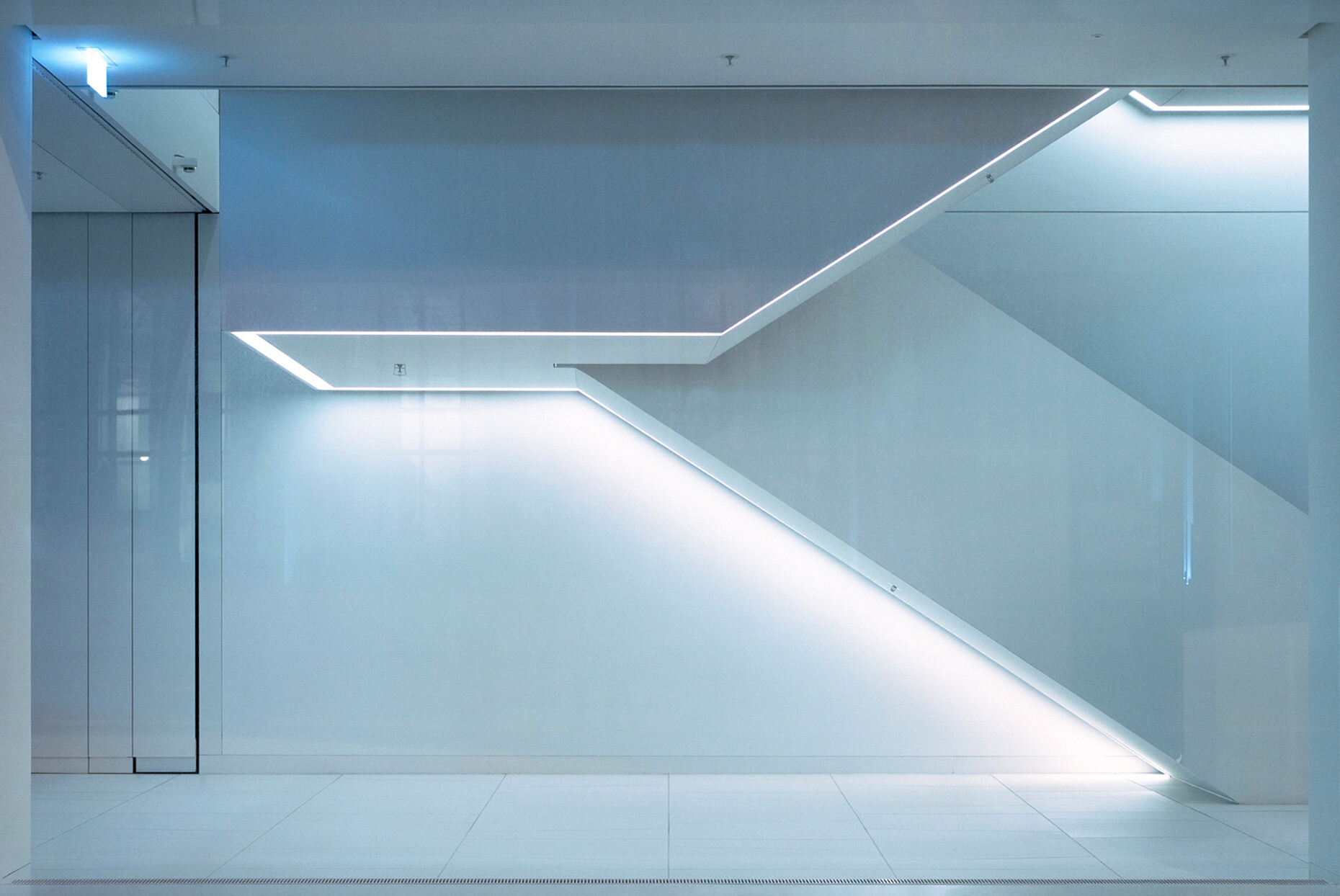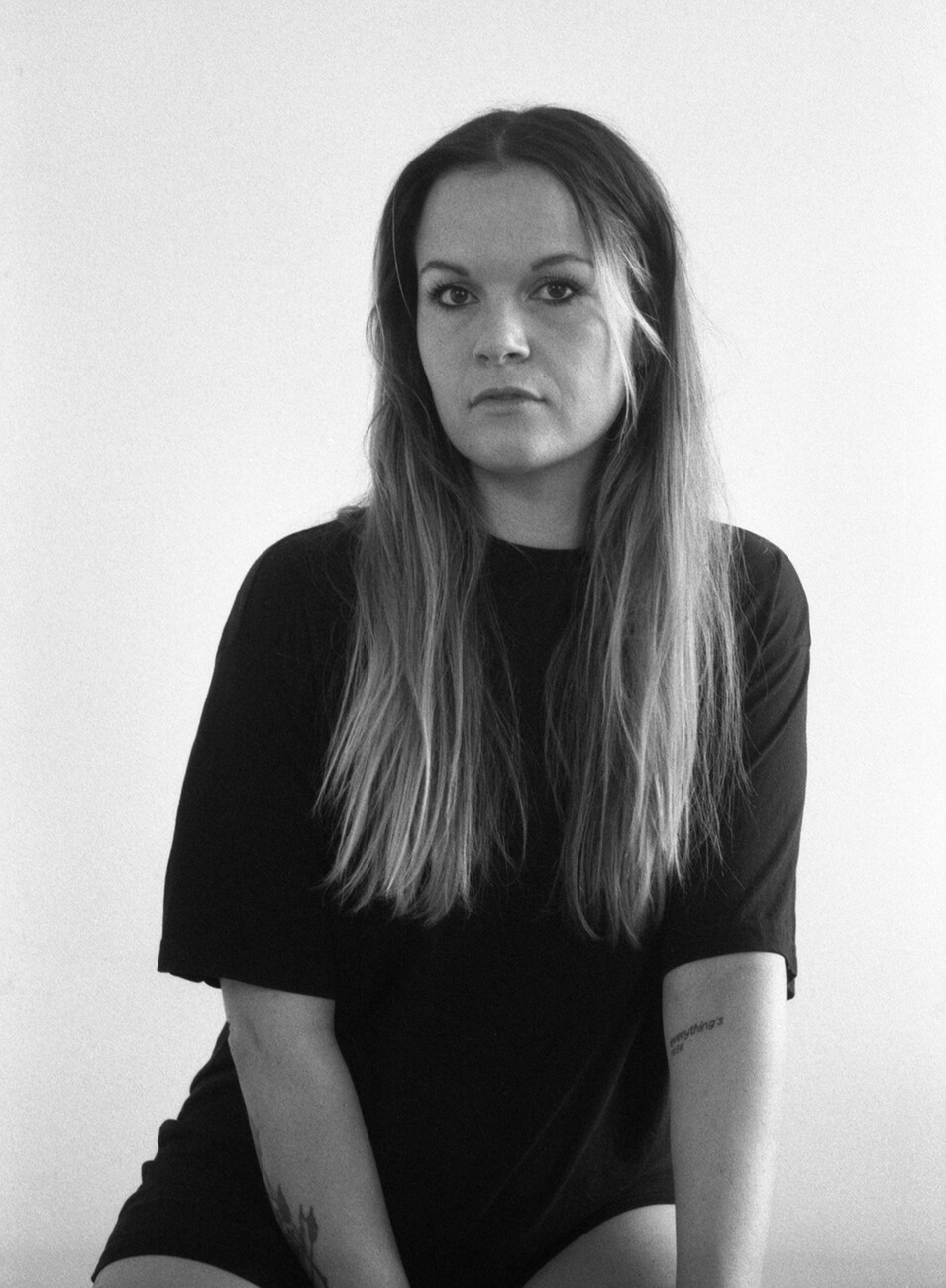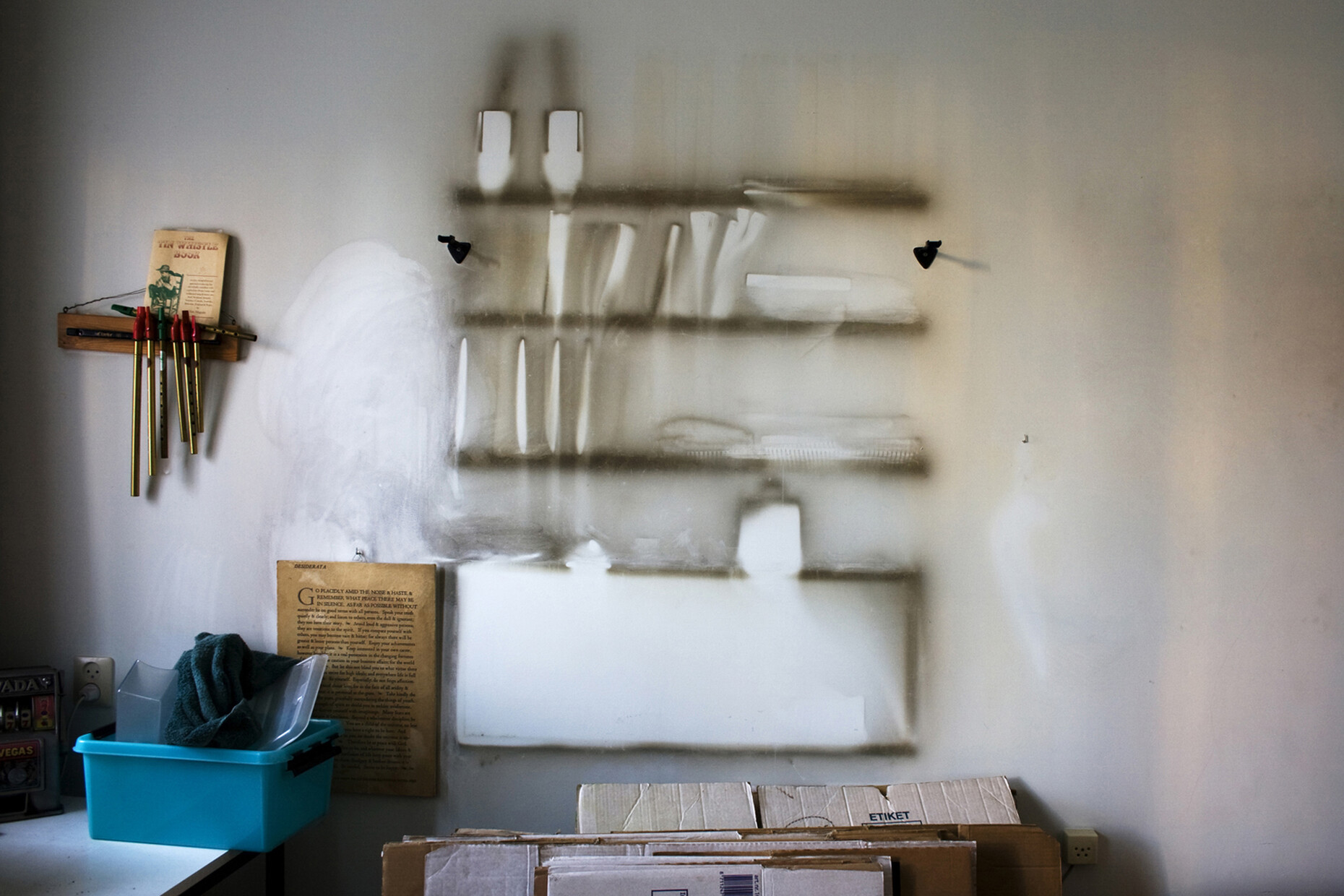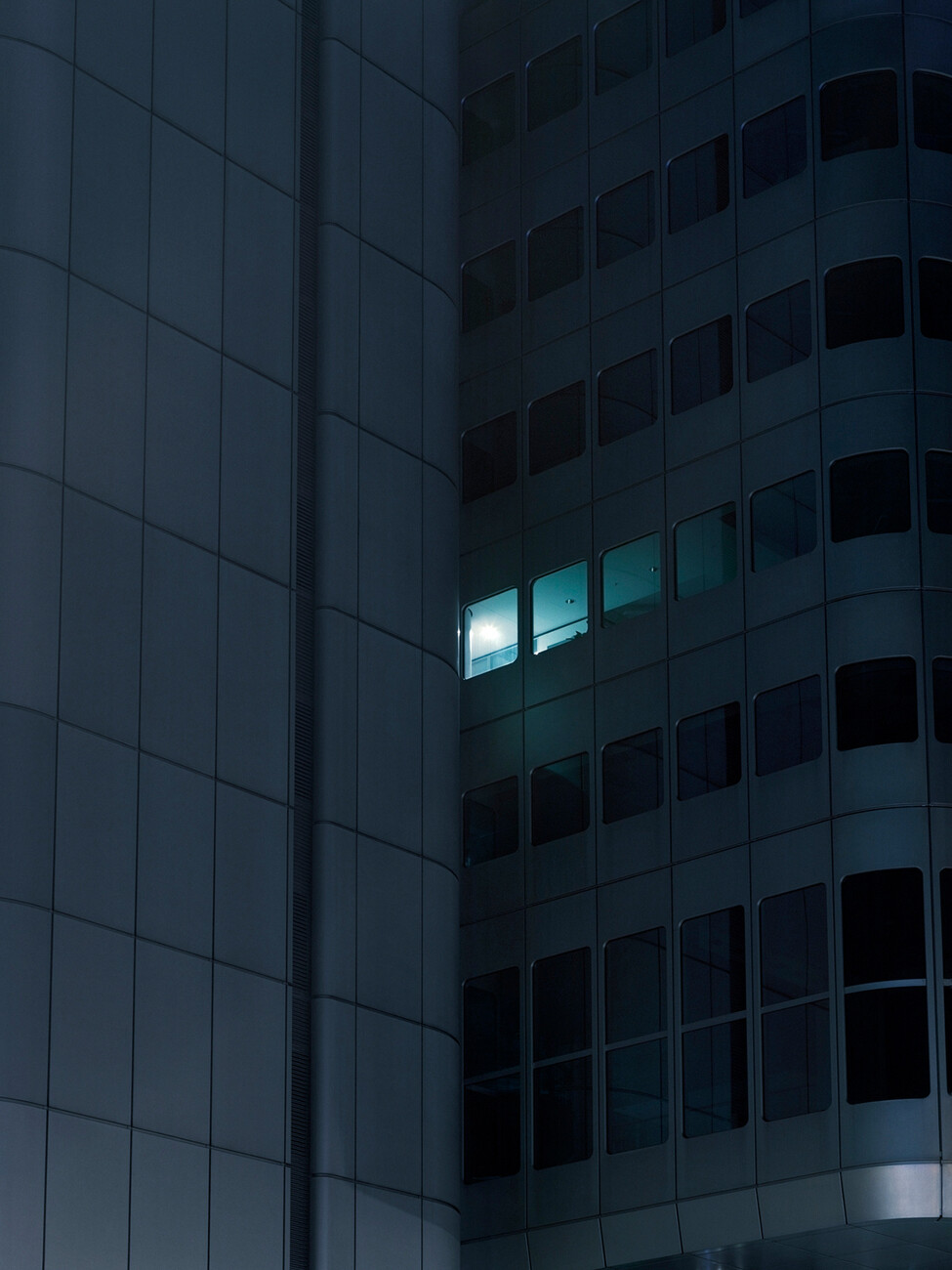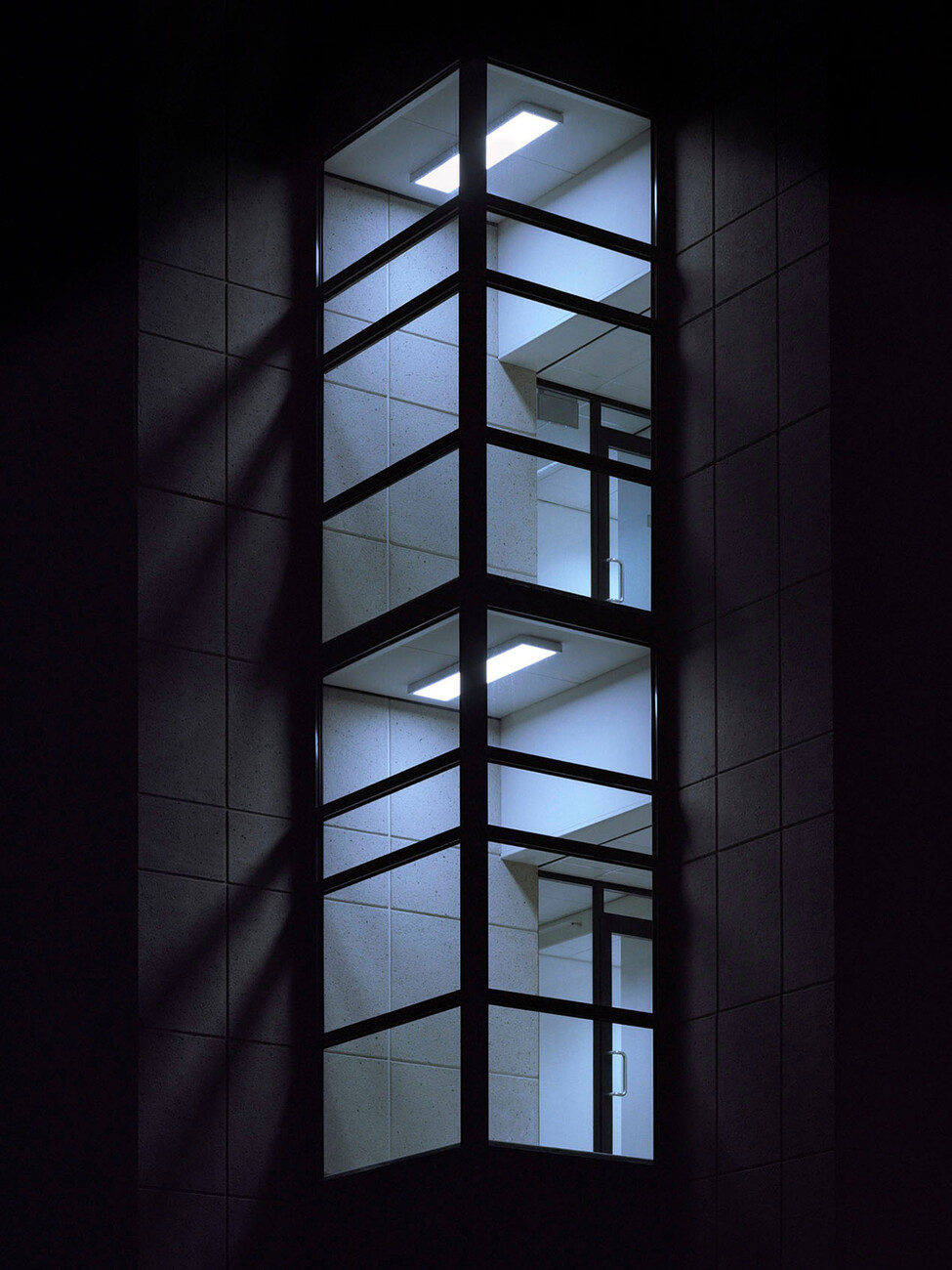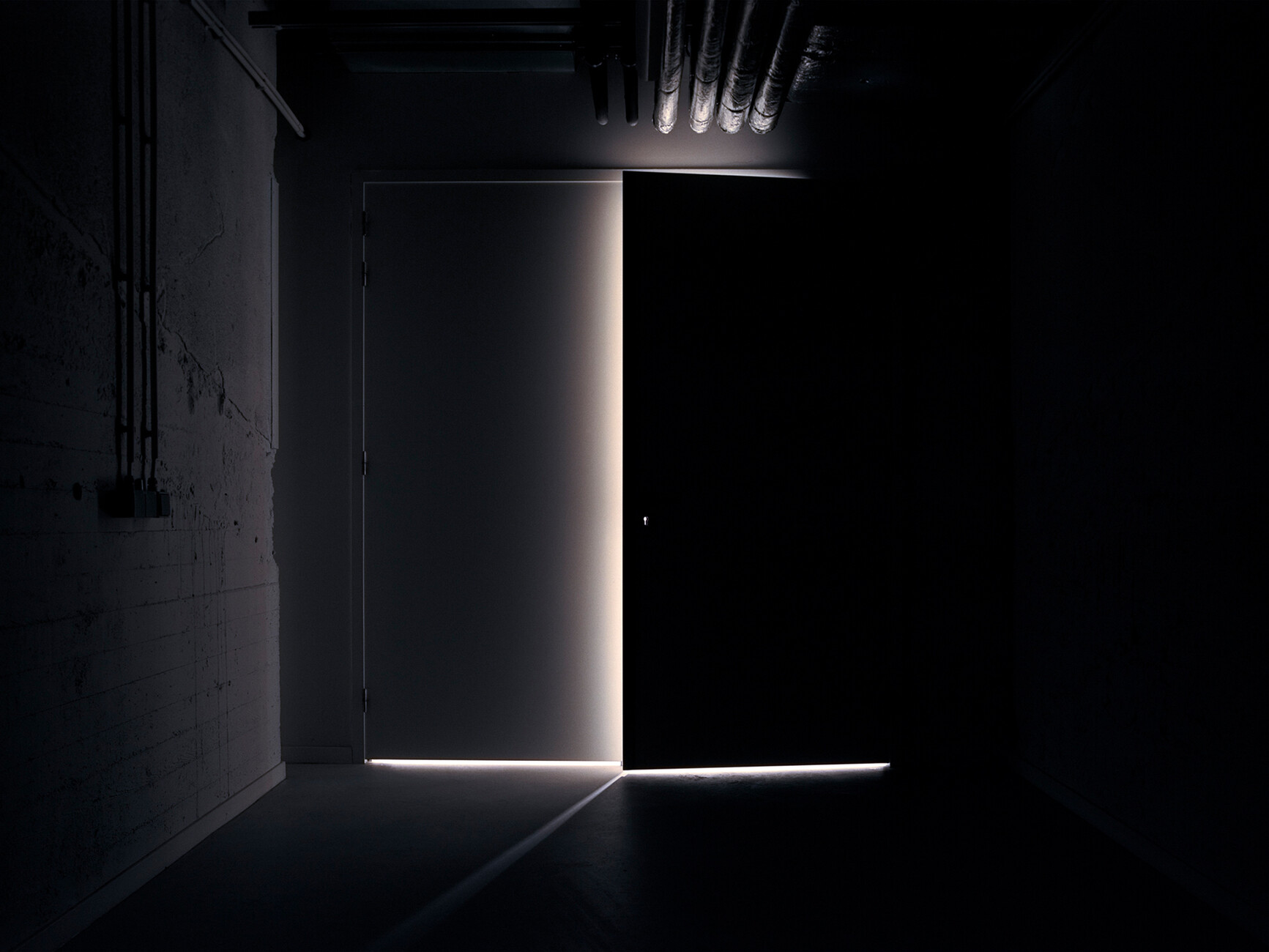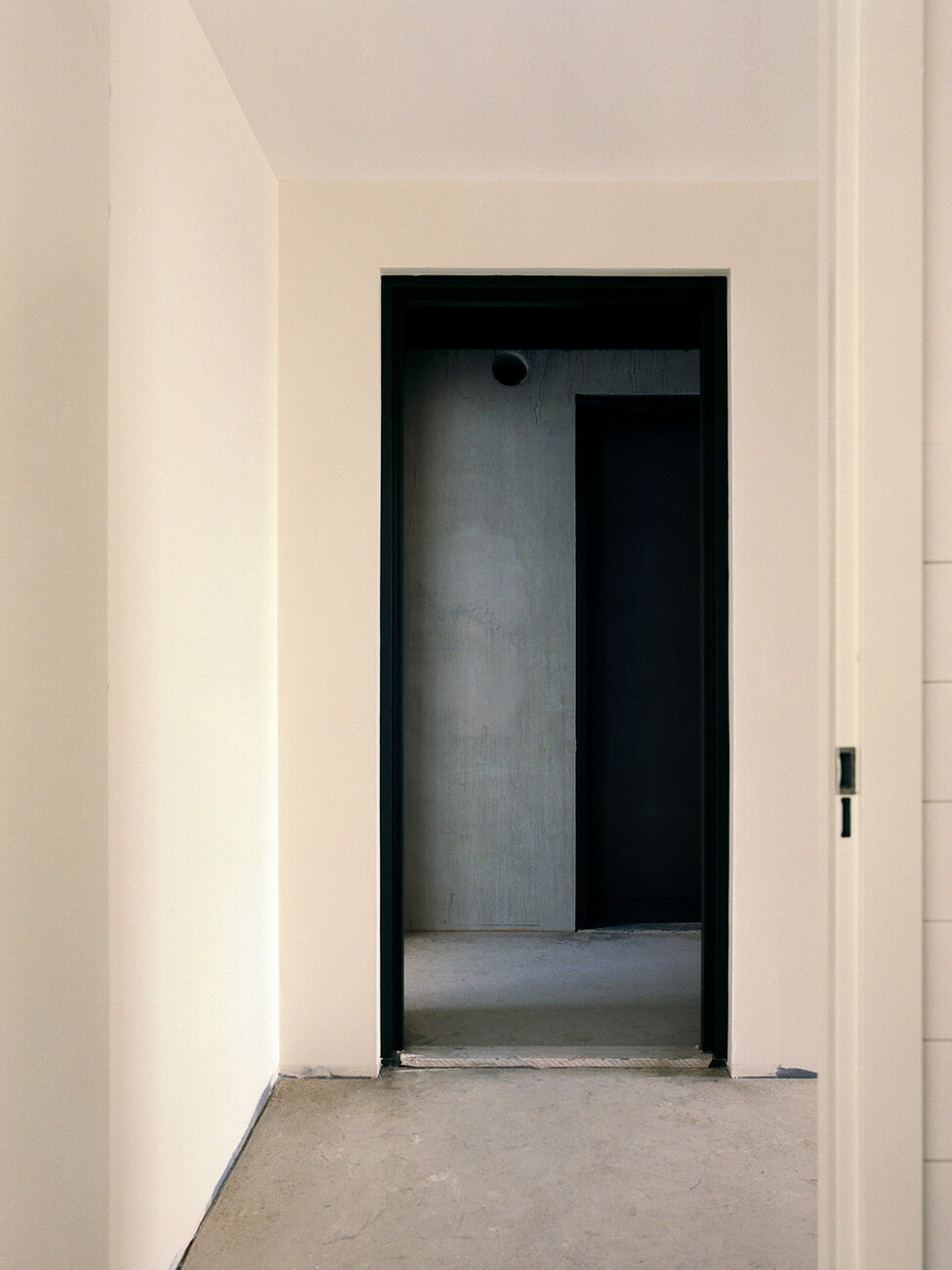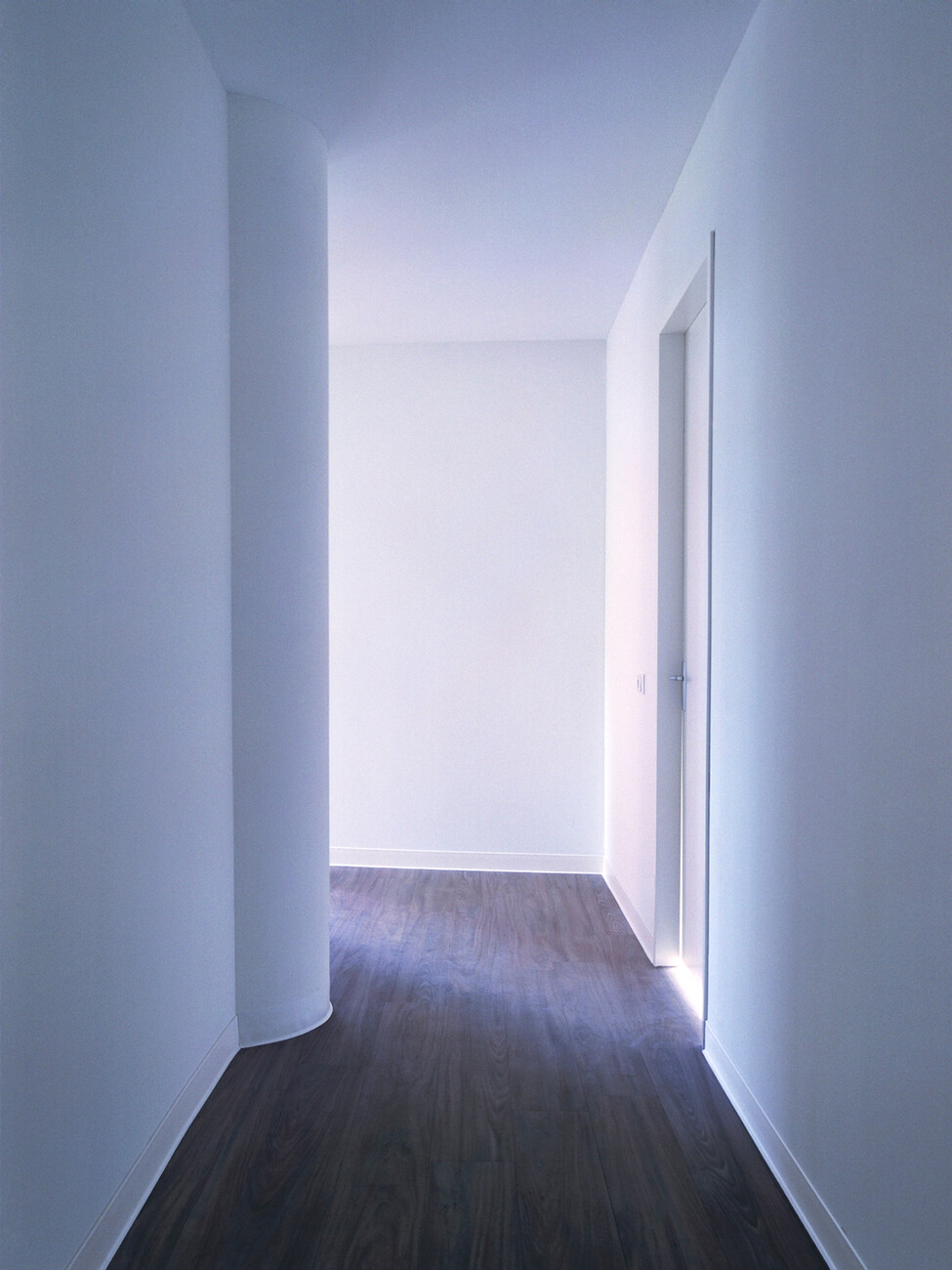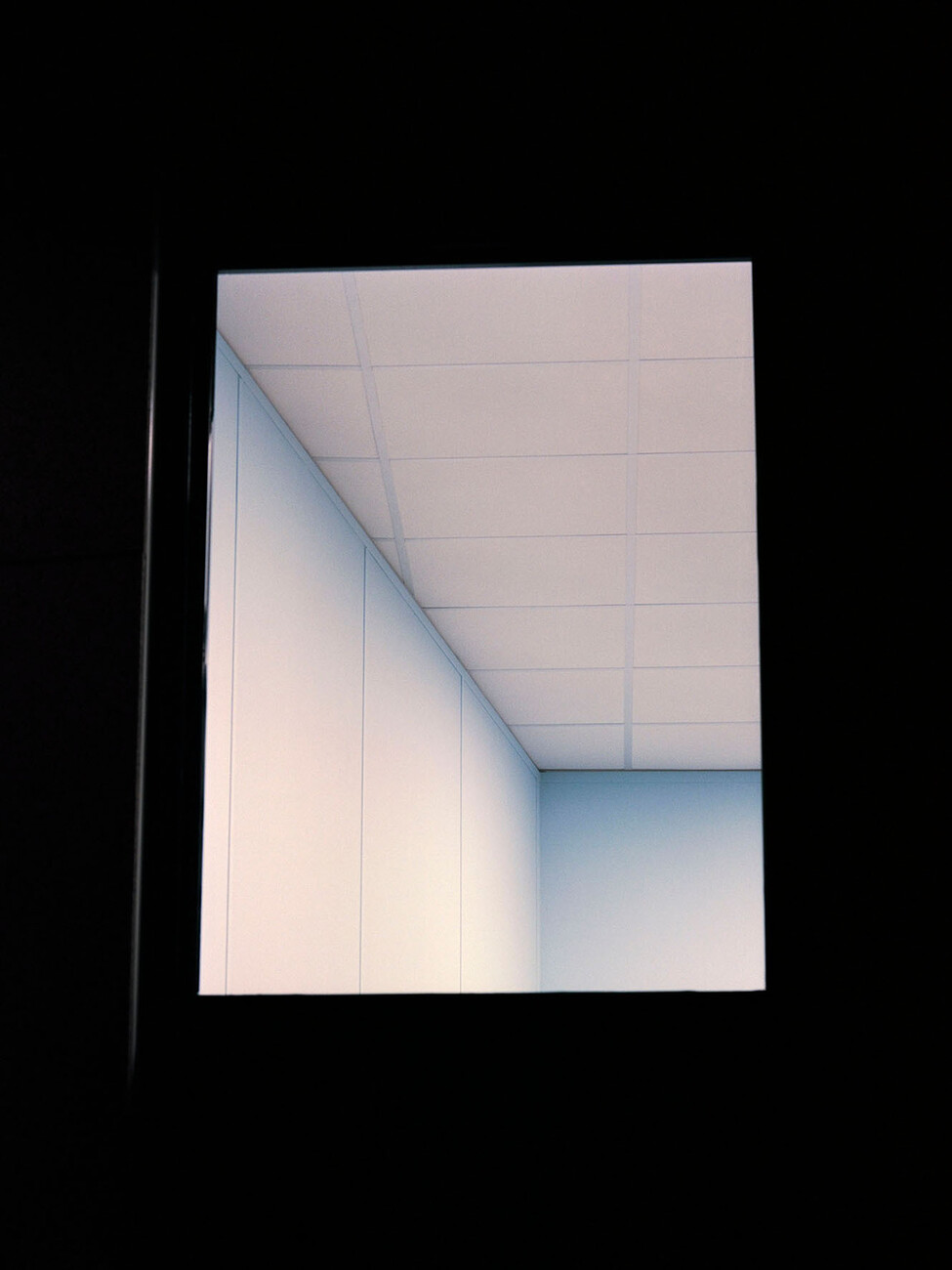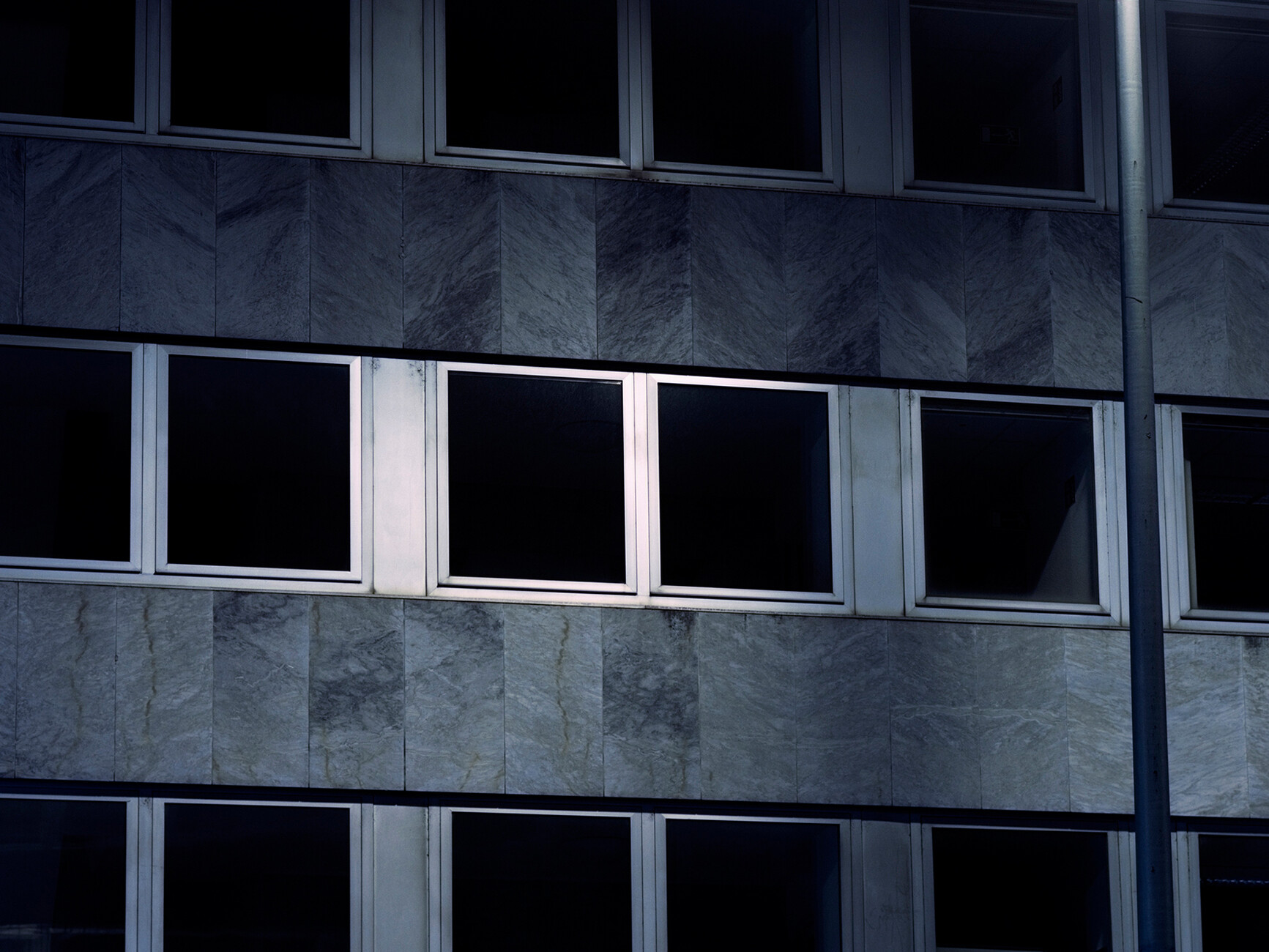Capturing stillness
Anna Moldenhauer: What appeals to you about photographing spaces, be they inside or outside?
Satijn Panyigay: I studied photography at Utrecht School of Art in the Netherlands, and in my final year (2010) I used the camera to explore the relationship between life and death. For one of the projects, I had the chance to shadow a company that clears out the homes of deceased people when there are no relatives to take on the task. During that time, I discovered the stories that a room or a space can tell through the human traces left behind, without the people who lived there being present. The series was called “Behind Death’s Door”. It fascinated me just how many emotions can be in one space, but also how many assumptions the mind tries to use to fill that void. I guess it was during that time that I developed an interest in empty spaces. They offer stillness, like being in a remote part of the world. In contrast, life is hectic with stimuli everywhere, and that’s how I developed my interest in empty spaces per se. I was thus able to combine my interest in the stories of life with my love of architecture. Following on from the project, I sought out spaces that didn’t carry the weight of an acute loss, and these images appear more calming, because the situation around me while I was taking the pictures was very calm. In these rooms I was able to experience meditative moments while taking photographs. If I’m photographing architecture outside at night, that’s not always the case, and as a woman out at night you are always a bit more alert to whether anyone is approaching. The new ongoing series of photos called ‘Nightcall’ shows a bit of this tension; the previously pleasant silence turns into a secretive and sometimes eerie atmosphere.
Your camera, a Fujifilm GX680III, is a large model, so it takes some time to set up. How might I picture your way of working?
Satijn Panyigay: When I photographed the apartments while they were being emptied, I had to work very quickly because one second later the scene could have been changed by the clearance team. Here, the challenge lay in moving quickly with heavy equipment, but at the same time capturing an image that exudes calm. I managed it, but I prefer the slow process. For the photos of one of the empty museum buildings awaiting renovation, for example, I had several days to familiarize myself with the building, set up my camera, and capture the moments. But in other cases, I only had 20 minutes in between the changing of exhibitions. In the photos, I don’t think you really see the difference. For night-time shots, I have to assess the situation because there’s hardly any light. I work with an analogue film, which means I have to choose my subjects carefully. I generally prefer the slow process because it contrasts with the fast pace of our everyday lives. Everything has to be quicker, more beautiful, bigger, more polished, and nowadays even AI-generated. I believe there’s greater value in slowing down, in giving all of us more time. I think we, as human beings, should listen to our natural rhythm more.
The abstract architectural structures that you chose in cities like Utrecht or Frankfurt have clear lines. It’s not evident which city we are seeing, and the images you present may stem from only one. Do you deliberately seek a kind of contour, or is there an element of chance?
Satijn Panyigay: A bit of both. I found the first subjects while I was cycling home at night from my new studio in Utrecht and saw the bright shapes that emerged from the darkness. It took a while before I thought about photographing them, because the past years I mostly worked in inside spaces. Then I saw all these empty buildings from outside in a quiet moment, in the light of the streetlamps. Taking the photo from this perspective gave me the chance to capture a truly empty space, because I wasn’t even in it myself. This new perspective developed my viewpoint and gave the photos a new level. I roamed my city for quite a few nights and discovered more nocturnal beauty. Nevertheless, it is not always easy to search for and find subjects or to let them be found. Last December, for example, I was in Berlin for a few weeks with my camera, a city that I love, but I wasn’t able to discover any structures that suited my series at all. In Frankfurt, a couple weeks later, all the inspiration was immediately there. The atmosphere is just different. For a good subject, lots of factors have to stack up, the setting and my mood. And a capability of being receptive to what life gives me.
There are no people physically present in your photos, yet we do see traces of their existence. The buildings were designed and created by humans, just as the photograph is taken by you as a human being. The image shows a state between presence and absence, one might say. You could choose to photograph landscapes instead, which are not so obviously influenced by a human being – so why did you opt for this kind of subject?
Satijn Panyigay: I really love being in nature, because it gives me a feeling of calm and grounding. I think nature is more beautiful than anything. I have respect for people who photograph nature, but right now I don’t feel like I could photograph nature better than I perceive it, or bring something new. Besides, it’s not quiet enough for me, lots of things happen at the same time there, like the movement of leaves or birds. It’s wild and organic, just like me myself. My interest lies more in the way we humans act like we are not part of nature, while we are. What I love about architecture is that it has a rhythm. The structures are clear and linear. The buildings or the themes I choose are a kind of pattern. I wish my brain would sometimes work a bit more like that and that life would function a bit more according to those rules. But as you know, life is fluid and ever changing. I choose these subjects created by humans because they appear perfect, but when you look closer you see the irregularities of real life. Often, the floors will have scratches and stains. Something has broken off the wall. You see that someone has drawn one window blind lower than the other ones. It’s these little things that make the actual solid structures more human and more alive. That’s what appeals to me, this frictioning state.
When I saw your images for the first time, I wasn’t sure whether they were photographs, paintings, or drawings. Why did you choose a form of expression that could, in a way, be construed as interdisciplinary work?
Satijn Panyigay: Well, thank you! I always see it as a compliment when my pictures can be interpreted as something else than photography – even though I love the medium in all its facets. I think it’s for a big part the analog medium I prefer to use, which suits me. In the moment when you take a photo, you don’t see the result and you’re more focused on the process. I also love the slowness of working with film, and the slight blur it brings, making the straight lines a bit soft and grainy. I like the way the light is split into colors. Sometimes there’s a normal light in a venue, and with a digital image you would only see a white color gradient going into dark. With the analog images, the coloring is sometimes like a rainbow, all these tones are fragmented, which brings an additional level to it. So I think the effect of it being a bit painterly is based primarily on the analog way of working. I’ve chosen a film that is actually designed for photographing human skin. I take out the warmth so that my images become a bit cooler; the blue, violet, or pink tones come up more. I like the softness that brings and in a way you could say I photograph the skin of buildings, giving the hard materials more humanlike features.
Another aspect that interests me is the stillness that your photographs radiate, which appears both pleasing and melancholic. In the spaces you capture with your camera, one could feel very small and alone. In a way, they are spaces where you can ask yourself questions about your life and your very essence. There is not a lot of input – you’re alone with the structure and an environment that offers the chance to sense impressions and emotions. Why do you find this atmosphere interesting?
Satijn Panyigay: First of all, I’m very touched to hear that my photographs create this impression. That’s not always the case, some people see my work as purely architectural photography. In my photographs, I largely process feelings like loneliness and solitude. Sometimes it’s difficult to get to grips with life and find your way. You also have to deal with everything else going on in the world. My work helps me to deal with these emotions and to give them space, and at the same time I want to provide space for other people that have these feelings and struggle with them. In this sense, my photographs should also offer an element of comfort. In the beginning my work was very melancholic, and then more light came into play. It was kind of a dance between darkness and light, sadness and wonder – all these emotions combined. I do everything from the heart. Through my work, I learn to know myself better and that’s an interesting process we hardly take time for. Just being by ourselves, with ourselves. As I am a human being and all my feelings and emotions are universal, and the subjects I work with are often not too steering, it makes it possible for other people to find their own meaning in them.
I think you indeed manage that because your photographs leave plenty of scope for interpretation. So the viewer can decide for themselves whether they would rather see an architectural shot or allow the emotions in the image to come through.
Satijn Panyigay: I love the idea that something can be made from a very personal place, which my work is, but when it’s up in an exhibition or someone’s home, it’s not my work anymore, it’s what the viewer perceives in it. And that could basically be anything.
In your publication “VOID”, you gathered moments of emptiness, in-between states. What do you aim to convey with these images?
Satijn Panyigay: For me, it’s never a conscious thing to convey a message, because I take photographs first and foremost for myself. But you could say that with my work I would like to inspire people to view the 'ordinary', daily things with more attention, take more time in general to process what you experience, and I would love to provide some space or add room – literally and figuratively – for contemplation. It’s these ordinary things that fascinate me, like an empty museum building before the conversion begins for the next exhibition. Visitors don’t get to see this still state, and it’s only thanks to my camera that I’m allowed to look behind the scenes and capture these special moments, which are nevertheless commonplace. Sometimes that reminds me of old photo albums where you can see the highs and lows of someone’s life, but not so much the small, insignificant moments that have provided structure. It’s all part of life. The gap between this and that event is something that fascinates me. The moments I selected for “VOID” are similar to the empty moments in the city, for example at night when there’s only one light left on in a high-rise building. There’s probably no one there; someone simply forgot to turn off the light. It’s to me a very interesting in-between moment when nothing happens, but a light is still on. And, you never know, it could be someone working there, since our current modern society never really rests.
What are you working on right now?
Satijn Panyigay: I’ve just completed two projects for the night-time photo series and also exhibited works for each of them, including at Galerie Peter Sillem in Frankfurt (on view until Saturday 24 August, 2024). After the summer Hartmann Projects, the publisher of my book, will show my work in their office gallery in Stuttgart (September 21 to November 23, 2024). In the next months I’ll be working on four major commissioned projects. It’s great to be in such demand as an artist. Two of the projects involve well-known institutional buildings that are currently being renovated. In parallel, I have a list of spaces that I would like to photograph. Architecture at night also continues to fascinate me, since I still see beautiful things around me and I want to continue my search in other cities.

VOID
Artist book
Hardcover flatbook
21,2 x 32 cm
Foldout size: 42,4 x 64 cm
Published by Hartmann Books, 2023
Design by -SYB-
104 pages | 39 images | 14 foldouts
Die cut cover, full-color images, color on cut
Edition of 750
ISBN 978-3-96070-099-9
68 Euro
